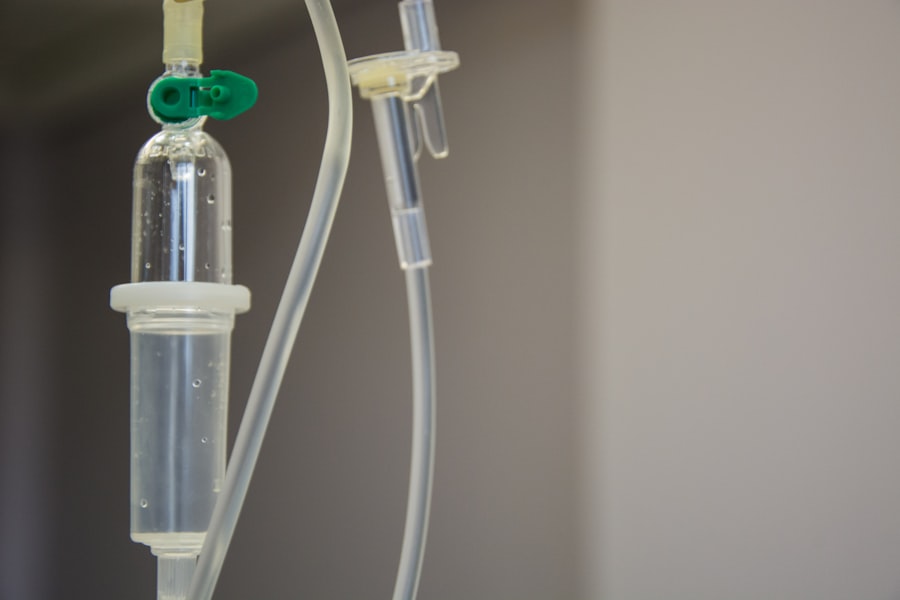In recent years, wearable health monitoring devices have significantly impacted healthcare. These devices, worn as accessories, enable real-time tracking of various health metrics. Examples include smartwatches for heart rate monitoring and fitness bands for tracking physical activity and sleep patterns.
Their popularity has grown among consumers seeking to actively manage their health. The integration of technology into personal health management has facilitated easier health monitoring and encouraged a more proactive approach to healthcare. The emergence of wearable health monitoring devices reflects a broader shift towards personalized medicine, where healthcare is customized to individual needs rather than applying a universal approach.
As these devices become more advanced, they collect extensive data providing insights into individual health status. This data ranges from basic metrics like step count and calorie expenditure to more complex measurements such as blood oxygen levels and electrocardiograms. The potential of this technology extends beyond fitness tracking, potentially revolutionizing our understanding and management of health.
Consequently, it is crucial to examine the current state, advancements, and future potential of these devices.
Key Takeaways
- Wearable health monitoring devices are becoming increasingly popular for tracking and managing personal health and fitness.
- Current wearable health monitoring technology includes devices such as smartwatches, fitness trackers, and medical-grade wearables.
- Advancements in wearable health monitoring devices include improved accuracy, real-time data analysis, and integration with other healthcare systems.
- Wearable health monitoring devices have the potential to revolutionize healthcare by enabling proactive and personalized health management.
- Challenges and limitations of wearable health monitoring devices include data privacy concerns, accuracy of measurements, and regulatory issues.
Current State of Wearable Health Monitoring Technology
As of now, the market for wearable health monitoring technology is thriving, with a plethora of devices available to consumers. Major tech companies such as Apple, Fitbit, and Garmin have established themselves as leaders in this space, offering products that cater to a wide range of health and fitness needs. These devices are equipped with sensors that can monitor vital signs, track physical activity, and even provide insights into sleep quality.
The data collected by these wearables is often synced with mobile applications, allowing users to visualize their health metrics over time and make informed decisions about their lifestyle choices. Despite the impressive capabilities of current wearable technology, there are still limitations that need to be addressed. For instance, while many devices can accurately measure heart rate and step count, they may struggle with more complex metrics such as blood pressure or glucose levels.
Additionally, the accuracy of the data collected can vary significantly between different devices and brands. This inconsistency raises questions about the reliability of the information users receive and its implications for health management. Nevertheless, the current state of wearable health monitoring technology represents a significant step forward in empowering individuals to take control of their health.
Advancements in Wearable Health Monitoring Devices

The field of wearable health monitoring devices is characterized by rapid advancements that continually enhance their functionality and accuracy. Recent innovations have led to the development of devices that can monitor a wider array of health metrics than ever before. For example, some wearables now include advanced sensors capable of tracking blood glucose levels non-invasively, which is particularly beneficial for individuals with diabetes.
Furthermore, the integration of artificial intelligence and machine learning algorithms into these devices allows for more personalized insights and recommendations based on individual health data. Another notable advancement is the incorporation of advanced materials and design features that improve user comfort and device longevity. Manufacturers are increasingly focusing on creating wearables that are not only functional but also aesthetically pleasing and comfortable for long-term wear.
This shift has led to the emergence of smart clothing embedded with sensors that can monitor physiological parameters without the bulkiness associated with traditional wearables. As technology continues to evolve, we can expect even more groundbreaking advancements that will further enhance the capabilities of wearable health monitoring devices.
Potential Impact of Wearable Health Monitoring Devices on Healthcare
The potential impact of wearable health monitoring devices on healthcare is profound and multifaceted. One of the most significant benefits is the ability to facilitate early detection of health issues. By continuously monitoring vital signs and other health metrics, these devices can alert users to potential problems before they escalate into serious conditions.
For instance, irregular heart rhythms detected by a smartwatch can prompt users to seek medical attention sooner than they might have otherwise, potentially saving lives in the process. This proactive approach to health management could lead to reduced healthcare costs and improved patient outcomes. Moreover, wearable health monitoring devices have the potential to enhance patient engagement in their own care.
By providing individuals with real-time feedback on their health metrics, these devices empower users to make informed decisions about their lifestyle choices. This increased awareness can lead to healthier behaviors, such as increased physical activity or improved dietary habits. Additionally, healthcare providers can leverage the data collected by wearables to tailor treatment plans and monitor patient progress more effectively.
As a result, wearable technology could play a crucial role in shifting the focus of healthcare from reactive treatment to proactive prevention.
Challenges and Limitations of Wearable Health Monitoring Devices
Despite their numerous advantages, wearable health monitoring devices face several challenges and limitations that must be addressed for them to reach their full potential in healthcare. One significant concern is data privacy and security. As these devices collect sensitive health information, there is an inherent risk associated with data breaches or unauthorized access.
Users may be hesitant to fully embrace wearable technology if they fear that their personal health data could be compromised. Therefore, manufacturers must prioritize robust security measures and transparent data policies to build trust among consumers. Another challenge lies in the integration of wearable technology into existing healthcare systems.
While these devices generate valuable data, there is often a disconnect between the information collected by wearables and how it is utilized by healthcare providers. Many practitioners may not have access to or be trained in interpreting this data effectively. Additionally, there may be regulatory hurdles that impede the seamless integration of wearable technology into clinical practice.
Overcoming these challenges will require collaboration between technology developers, healthcare providers, and regulatory bodies to ensure that wearable health monitoring devices can be effectively incorporated into patient care.
Future Trends and Innovations in Wearable Health Monitoring Devices

Looking ahead, several trends and innovations are poised to shape the future of wearable health monitoring devices. One promising direction is the continued miniaturization of sensors and components, which will enable even more discreet and comfortable wearables. As technology advances, we may see the emergence of smart textiles that can monitor health metrics without being perceived as traditional devices at all.
This could lead to widespread adoption among individuals who may be reluctant to wear bulky gadgets. Additionally, advancements in artificial intelligence will likely play a pivotal role in enhancing the functionality of wearable devices. By harnessing machine learning algorithms, future wearables could provide users with predictive analytics based on their unique health data patterns.
This capability could enable early intervention strategies tailored specifically to individual needs, further bridging the gap between personal health management and clinical care. As research continues to explore new applications for wearable technology, we can anticipate a future where these devices become integral components of everyday life and healthcare practices.
The Role of Wearable Health Monitoring Devices in the Future of Healthcare
In conclusion, wearable health monitoring devices represent a significant leap forward in personal health management and have the potential to transform the healthcare landscape as we know it. By empowering individuals with real-time data about their health metrics, these devices encourage proactive engagement in wellness and disease prevention. The advancements in technology have made it possible for wearables to track an ever-expanding array of health indicators, paving the way for personalized medicine tailored to individual needs.
However, for wearable health monitoring devices to realize their full potential, challenges related to data privacy, integration into healthcare systems, and device accuracy must be addressed. As we look toward the future, it is clear that ongoing innovation will play a crucial role in shaping how these devices are utilized within healthcare settings. Ultimately, as technology continues to evolve and improve, wearable health monitoring devices are poised to become indispensable tools in promoting healthier lifestyles and enhancing patient care in an increasingly digital world.
For those interested in the latest advancements in technology and how they can impact personal health management, exploring the future of wearable health monitoring devices is essential. While I don’t have a direct link to an article specifically about wearable health devices, you might find related insights in an article discussing the Samsung Galaxy Chromebook 2 360. This device exemplifies how modern technology integrates into daily life, potentially interfacing with health apps and wearables to enhance user experience and health monitoring.
FAQs
What are wearable health monitoring devices?
Wearable health monitoring devices are electronic devices that are worn on the body to track and monitor health and fitness-related data. These devices can include smartwatches, fitness trackers, and other wearable sensors.
How do wearable health monitoring devices work?
Wearable health monitoring devices typically use sensors to collect data such as heart rate, activity levels, sleep patterns, and other biometric information. This data is then processed and analyzed by the device to provide insights into the user’s health and fitness.
What are the benefits of using wearable health monitoring devices?
Wearable health monitoring devices can provide users with real-time feedback on their health and fitness, helping them to make informed decisions about their lifestyle. These devices can also track progress over time and provide motivation for users to stay active and healthy.
What is the future of wearable health monitoring devices?
The future of wearable health monitoring devices is likely to involve advancements in sensor technology, data analysis, and integration with other health systems. This could lead to more accurate and personalized health monitoring, as well as improved connectivity with healthcare providers.
Are there any concerns about wearable health monitoring devices?
Some concerns about wearable health monitoring devices include data privacy and security, as well as the accuracy and reliability of the data collected. There are also questions about the regulatory oversight of these devices and their integration into healthcare systems.

